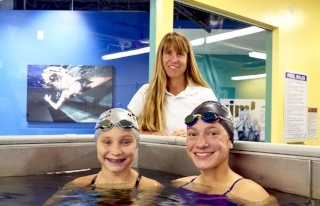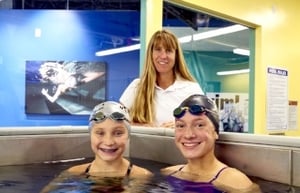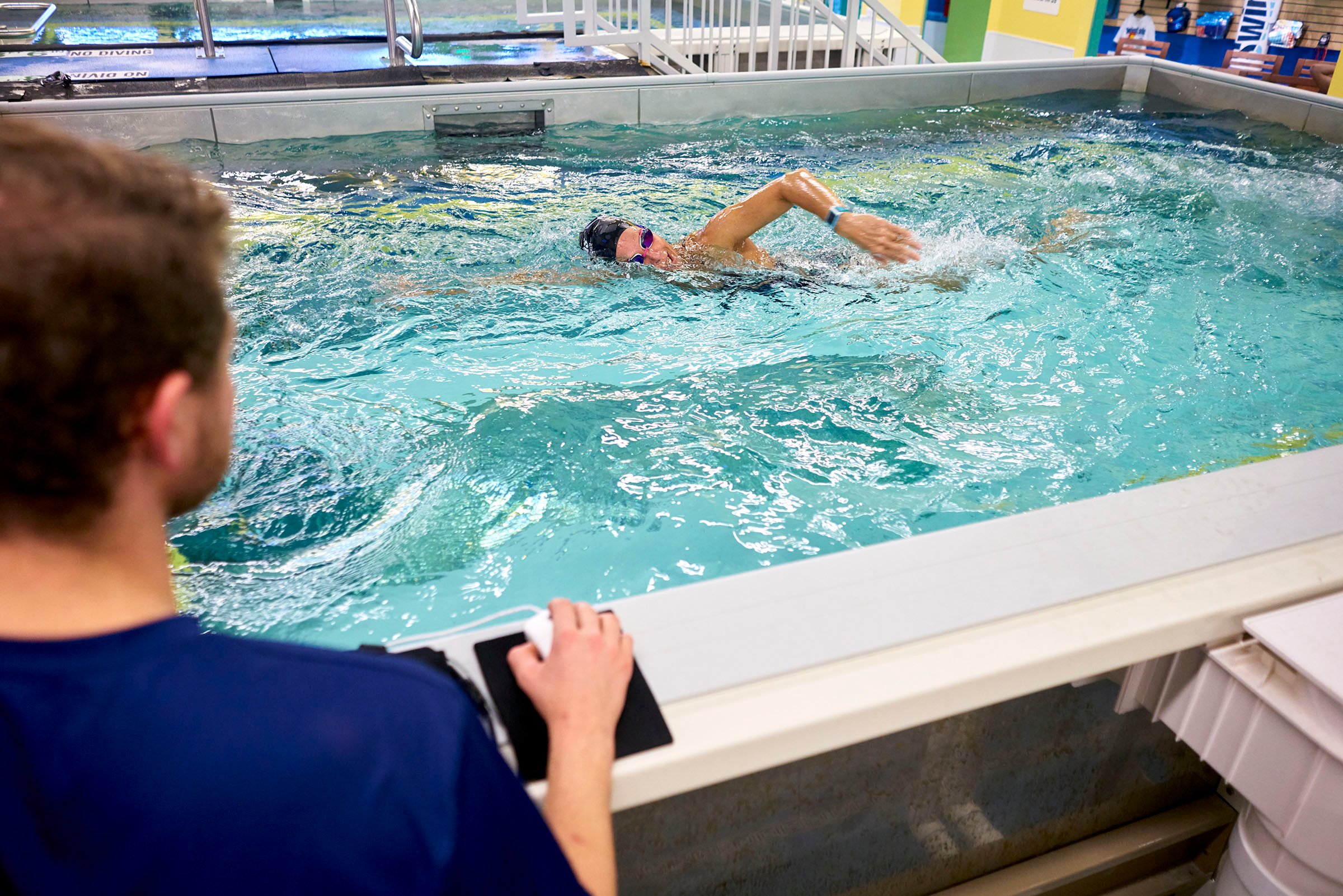
At SwimLabs, our highest priority is teaching kids how to be safe in and around water!
1. Blowing Bubbles and Bobs
Blowing bubbles with your face in the water is the first foundational skill for swimming. Children must learn how to keep water out of their nose and mouth to become comfortable with their face in the water. In an emergency situation, we want children to be more comfortable with having their face submerged so they can use their energy for life-saving techniques. If they are comfortable blowing bubbles, they also will not be swallowing water.
 2. Rolling Front to Back and Back to Front
2. Rolling Front to Back and Back to Front
Rolling and floating on your front and back is the second most foundational skill in swimming. If a child is comfortable with their face in the water and can keep themselves at the surface, it’s much easier for them to either call for help or keep breathing without swallowing water. Additionally, having a good body position at the surface of the water is THE MOST IMPORTANT part of swimming the 4 competitive strokes.
3. Kicking on Front and Back
Kicking is the third foundational skill in swimming because it is the primary propelling force. If a child is comfortable with their head in the water or floating on their back, they can survive nearly any situation until someone can rescue them. Learning how to propel themselves to the wall of a pool will make them self-sufficient in the water. Developing a proper kick is also critical for swimming all 4 strokes.
4. Freestyle Arm Strokes
Freestyle arm strokes are well documented as the most efficient forward propelling force in swimming. We teach our swimmers to pull correctly so they become more efficient swimmers-- which makes them safer swimmers.

5. Side breathing
Side breathing allows your swimmer to be efficient and effective in the water, and it is NECESSARY for all swimmers to learn, not just for the future competitive swimmers. Breathing to the side allows your child to maintain a good and neutral body position at the surface of the water while breathing. When a swimmer tries to breath with their head facing forward, their hips will drop and and they may start to sink which wastes a lot of energy and can create a dangerous situation. Breathing to the side will usually come naturally to swimmers that have already learned to roll from front-to-back.
Why We Don’t Teach Swimmers to Tread Water
Treading water is the most energy intensive and least efficient way to stay at the surface of the water. It can be an important skill for a more proficient swimmer, but it is not an effective life-saving tool because it is so tiring. Children (and adults) are much safer floating on their back and using their kick to reach safety rather than treading water in an emergency situation. Treading water requires a vertical body position, which utilizes a lot of energy to stay afloat, making it difficult to breathe.

Why We Don’t Learn Breaststroke Earlier
Breaststroke, like treading water, is the least efficient of the 4 competitive strokes. While many adults will use breaststroke as a workout stroke, most kids don’t have the body awareness to kick their legs in a circular motion, push their heads to the surface, and then return to a streamlined position. The flutter kicks used in freestyle and backstroke closely mimic a normal walking motion, making it easier for children to learn, but breaststroke kick is much more difficult.
Call (720) 699-0001 today to book swim lessons at SwimLabs Littleton!




